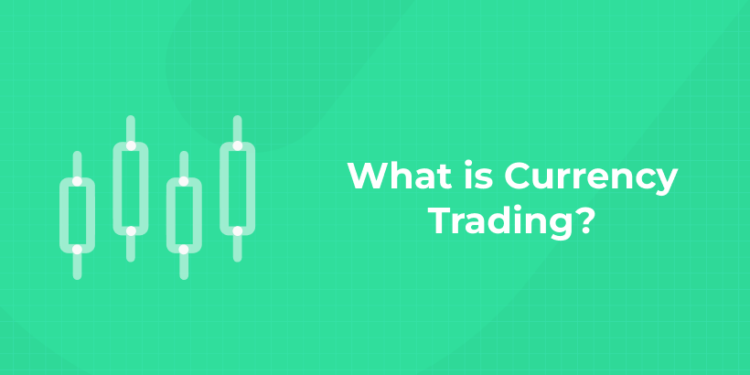Table of Contents
Buying and selling currencies in large quantities, making a profit as prices change, is known as currency trading or forex trading. Profits can be made from currency trading when exchange rates change. Since there is a lot of activity happening in the market, prices will keep moving. This creates interesting opportunities for individual traders. Let us learn more about currency trading.
Master the Art of Forex Trading! Get Free Demo!
Currency Trading
Forex trading or currency trading, is the process of buying one currency and selling another with the goal of making a profit from the trade. Due to advances in technology, anyone can trade currencies today.
The foreign exchange, forex or FX market, is a global marketplace for trading currencies. It does not have a central exchange and trading is conducted through over-the-counter (OTC) market or computer networks among traders worldwide. This market is the largest financial market in the world, with around $5 trillion in currencies traded every day.
The forex market can be highly active at any time because it takes place worldwide. Trading begins in one part of the world, when it ends in the other. Forex trading hours are more flexible compared to other financial products that follow the opening and closing times of the New York Stock Exchange, such as shares and ETFs.
Currency trading is always done in pairs of currencies. The pairs are classified into three:
Major currency pairs: These include the US dollar as the base or quote currency. These pairs make up three-quarters of all foreign exchange trades. Some of the major currency pairs are EUR/USD and GBP/USD. They face fewer liquidity problems due to the continued demand in the market.
Minor currency pairs: The currency pairs that don’t include the US dollar are the minor currency pairs.
Exotic currency pair: These are the currencies of smaller or emerging financial markets. They may experience liquidity issues as the trading volumes are lower and they might not always be in demand.
Benefits of Currency Trading
1: What is a stock?
Currency trading offers a number of benefits. Let us have a look at some of the main benefits:
- You don’t need to have a lot of money to get started. Anyone can easily get started with a small amount.
- Forex trading can be done with leverage, which means traders can use a marginal deposit to control a larger trade size. You can borrow money from your broker to trade with more money than you have.
- Flexible trading hours and high volume daily trading provides great opportunity for traders of different experience levels. Currency pairs can be traded 24 hours a day, five days a week.
- There are no transaction fees on currency trades. The only fee the traders pay is the spread between the buy and the sell price of the trade.
Master Forex Trading with Industry Experts! Enroll now for a free demo!
How to Trade in the Forex Market?
- Although currency trading is not complicated, you should have a good idea about it before you delve into trading. You should have an idea of the basic terminologies used in trading and be committed.
- You can start trading in the forex market by opening a trading account with an online broker.
- Always have a trading strategy. It will help you set broad guidelines and a road map for trading.
- Ensure that you check your position at the end of the day. Make sure that you do not have any pending positions to be filled and that you have sufficient cash in your account to make future trades.
Developing Strategies to Maximize Profit
Studying the market and developing a strategy help you determine when to buy or sell a currency pair. The strategy can be based on fundamental analysis, technical analysis, or a combination of both.
Fundamental analysis involves looking at all information that could affect a currency’s strength or weakness. You will have to look at various economic factors such as interest rates, inflation, and unemployment data to determine whether a currency is going to rise or fall.
Technical analysis involves analyzing price charts and indicators to predict a currency’s future movements. Traders should have knowledge about chart patterns and trends to predict future price movements.
Trading strategies can be categorized into four types. This classification is based on the duration and numbers used for trading. They are:
Scalp trade: It consists of cumulative positions held for seconds or minutes at most. The profit amounts are restricted in terms of the number of pips.
Day trade: It is a short-term trade in which traders hold positions and liquidate on the same day. The duration of this type of trade can be hours or minutes.
Swing trade: In this the traders hold the position for a period longer than a day, like days or weeks.
Position trade: It is a long term trade in which the trader holds the currency for a long period, that lasts for months or even years.
Types of Market
The three types of markets in currency trading are spot, forward, and future markets. Conducting market analysis and creating a trading strategy are essential steps for beginners.
Spot Market: It is where currencies are bought and sold based on their trading price. The spot market is also known as the cash market or physical market because cash payments are processed immediately, and there is a physical exchange of assets.
Forward Market: It is an over-the-counter marketplace that offers financial instruments that are priced in advance for future delivery. Forward contracts can be customized according to the holder’s requests.
Future Market: It is an auction market where participants can buy and sell commodity and futures contracts for delivery on a specified future date.
Master Forex Strategy and Risk Management! Get Free Demo!











